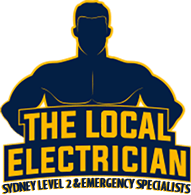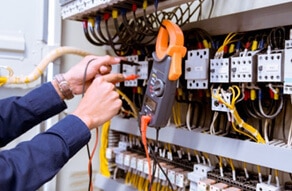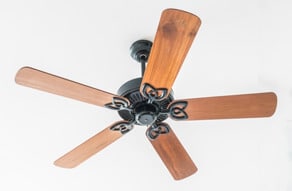Call us now
0439 823 190Steps In Making A Switchboard Connection
Posted on April 24, 2020

Successfully completing a switchboard connection is vital in delivering power to our houses. Being used to control power flow, a power switchboard can be personally made to save time and money. The Local Electrician has been working with electrical switchboards for over 25 years across all of Sydney. As a result, we have gathered useful insights on how to make a simple switchboard to be used inside a home. However, we always recommend engaging in the services of a professional electrician.
Making an electrical switchboard connection involves using multiple different wires, tools and materials. Being cautious of electrical hazards is also important to prevent shocks and other electrical damages. Saving time and money, creating a switchboard connection can ensure that the electrical appliances in the home are working correctly.
What is an Electrcial Switchboard?
The switchboard is the power distribution of the building, directing the electrical currents around the place. Redirecting electricity from the main supply, when an appliance is in need of use, the switchboard will provide the electrical power. The flow of electricity is controlled and managed by the electrical switchboard fitting, which is why it is really important.
Steps In Creating an Electrical Switchboard Connection
Instead of purchasing and installing a whole new switchboard, which can be expensive, you can upgrade your current switchboard with new wiring, RCD switches, fuses and circuit breakers. While saving the number of resources needed, the time and money spent are drastically reduced. If the switchboard is not damaged itself but more so the wires, following these steps can be extremely useful. However, as mentioned earlier this process can be extremely dangerous and should only be undertaken if you have the proper electrical licensing and training.
Tools
- Wire cutter
- Copper wire
- Switchboard
- Circuit Breakers
- Screwdrivers
- If a switchboard is not currently available, you can purchase one from a switchboard manufacturer. For example, we always use Hager for all our switchboard materials.
Safety Precautions
When dealing with the electrical wires and alike, it is important that protective gloves are worn. Even though the switchboard will have no power connected to it, it is a safety practice. For instance, as the wires are exposed due to insulation being removed the chance that the switchboard is connected to power may lead to shocks. Moreover, with the other sharper tools, gloves will also help, as well as safety glasses.This is the same when connecting the switchboard to the main power supply, ensure to be extremely safe. The sharp tools and electrical wiring can lead to severe and life-threatening injuries if handling any of the steps incorrectly.
Part 1 – Preparation
- Grab the copper wire and measure it across the switchboard
- With this measurement, peel off the insulation of the wire according to what measurement was recorded with the wire cutters
- Roll the copper wires around to add some strength to them. Also rolling them makes sure they do not separate while connecting in the switchboard
- Use the screwdriver to unscrew the screws in the ‘phase-in’ of the switches. They are located on the bottom of the switch
- Have the ‘phase-in’ inserted into the switches, which gives up one common face for the copper wire
- Tighten the screws back up again with the screwdriver to then cut with the wire cutters the remaining wire
Part 2 – Connection to Socket
- Using the wire cutters, cut the copper wire insulation according to the measurement of the ‘phase-out’ of the switch measuring it to socket’s line terminal
- Unscrew with the screwdriver the ‘phase-out’ part of the switch
- Roll the exposed wire so when feeding it through the line terminal of the socket it is much easier
- Using the screwdriver, tighten the screws back up again so the ‘phase-out’ section is secured
Part 3 – Connection to Regulator
- With the regular wire, trim off the insulation after measuring it with the distance from it to the ‘phase-out’ section
- Roll the exposed wire to strengthen it
- Unscrew the ‘phase-out’ part of the switch to then insert the ire into there
- Screw the part back in, with the ‘phase-out’ terminal helping the regular to support the fan
How to Know When Replacing the Old Switchboard is Needed
If curious on if the current switchboard of your home might need replacing, here are a few signs which may indicate this:
- Older homes and older wiring often means that the system is either outdated, not working or is of older technology
- If fuses are regularly blowing or appliance short circuit more than often, the switchboard can be malfunctioning
- When lights flicker, power points are hot or even spark or if there are buzzing noises around the home, the switchboard may be the reason
- When plugging in appliances and revising shocks that is an urgent reason for replacing the switchboard
For more information on when to upgrade to a new electrical switchboard, visit our insight providing the necessary information on the topic.
Switchboard Connection and Switchboard Upgrade Cost Factors
When undergoing a simple connection change to thinking of completely upgrading the switchboard, here are some cost factors to consider:
- The capacity of the current switchboard and if upgrades are being considered
- How much cabling space needed
- The time allocated to the labour and overall process (if hiring others involved)
- Size of the current switchboard – will the new connection work, will the upgrade be too big
- Will the rewiring for the new connection or switchboard be enough for the building’s energy use
What to Do When Needing Professional Help With the Switchboard
When wanting qualified help with installing a new connection, or even a new switchboard, The Local Electrician is here to help. Working in all Sydney suburbs, our Level 2 Electrician operators a fully licensed to work on any electrical switchboard and can carry out 3 phase switchboard upgrades. We can slo be called to connect a new system for the current switchboard, as well as be called for advice. Likewise, when needing upgrades, repairs or replacements for the current switchboard, our team are always willing and ready to help!

We encourage reading more on electrical switchboards through the information provided by Safe Work NSW – ‘Electrical practices – construction and demolition sites fact sheet’. Moreover, it is also beneficial to know that here at The Local Electrician we are open 24/7 for service. This is through our Emergency Electrician team who are easily able to operate at any time for working on switchboards, as well as any other electrical tasks.
Our electrical services for working on switchboards are contactable on 0439 823 1… or through emailing info@thelocalelectrician.com.au. We make sure whenever we work on electrical switchboards that we arrive on time and use safety precautions. Moreover, working efficiently and effectively your switchboard will be connected, upgraded or repaired through the most professional methods.
Lifetime Warranty on Workmanship and Labor
Our Services
Our skilled electricians are qualified to carry out any electrical repair or installation within Sydney. We strive to deliver absolute customer satisfaction by offering electrical services that are affordable, safe and long lasting.
- Private Power Pole Installation: What Sydney Homeowners Need To Know - November 29, 2023
- Understanding Power Outages: When To Call a Level 2 Electrician - November 14, 2023
- Understanding Level 2 Electrical Needs: FAQs for Sydney Homeowners - October 7, 2023
Our Level 2 Local Electrical Services










